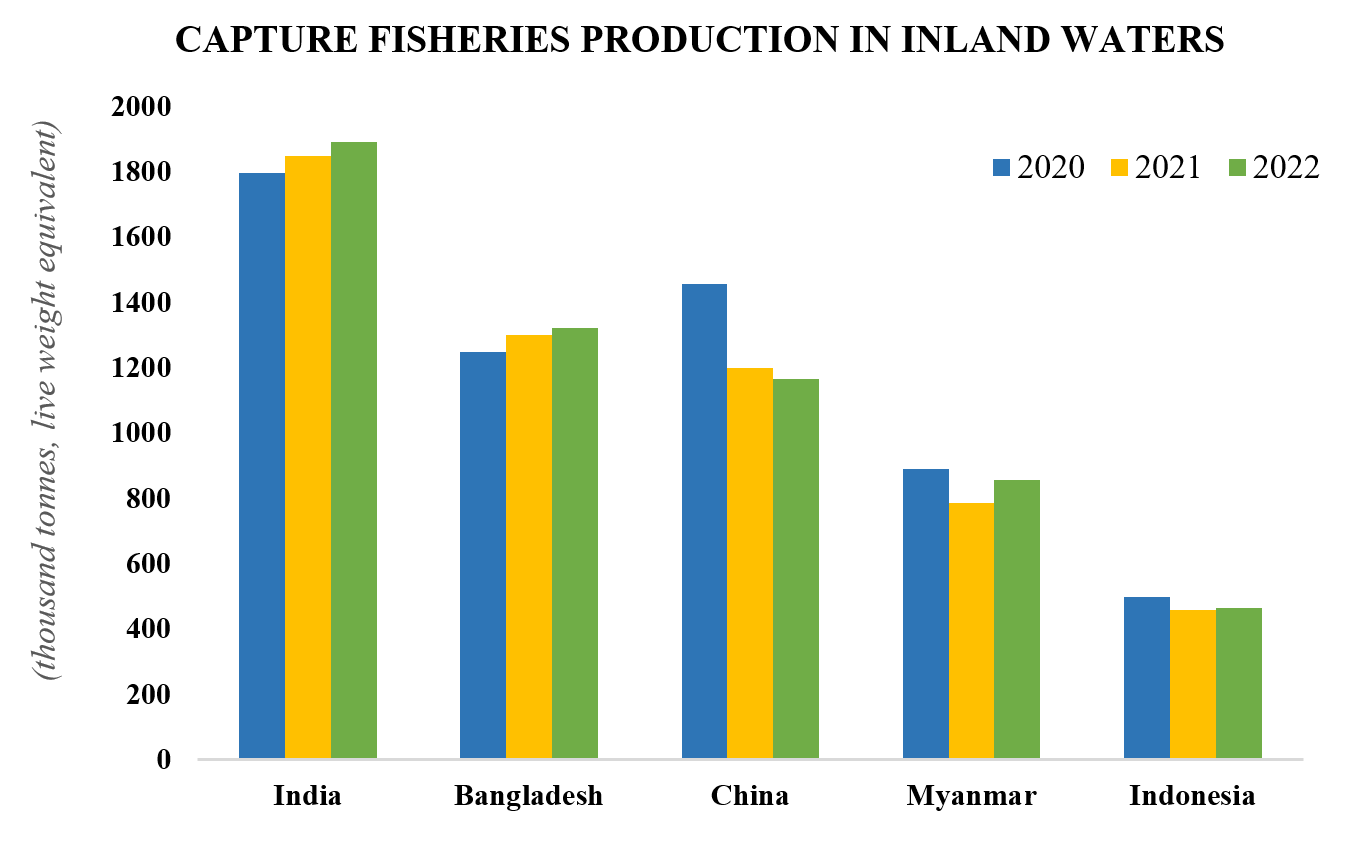
Bangladesh is the world’s second-largest producer of freshwater fish, surpassing China, which has fallen to third place. The top spot remains occupied by India.
According to the study “The State of World Fisheries and Aquaculture” released by the Food and Agriculture Organization (FAO) of the United Nations, Bangladesh has surpassed China to become the second-largest producer of freshwater fish in the world.
The report used data from 2022, which is released every two years. The ranking is determined by the quantity of fish caught from natural bodies of water, such as rivers, lakes, and wetlands.
The study states that in numerous countries, notably large aquaculture producers such as China, India, Vietnam, and Bangladesh, aquaculture production has consistently exceeded capture fisheries for a couple of years.
Countries with significant waterbodies or river basins tend to have a higher concentration of production from inland fishing. India, China, Bangladesh, and Myanmar are the leading producers of inland fish in Asia, collectively contributing to around 66% of the worldwide inland fisheries production.
China lost its position as the leading producer of inland water since 2020. In 2022, India and Bangladesh exceeded it in terms of catches, with 1.9 million tonnes and 1.3 million tonnes, respectively. Nevertheless, Bangladesh’s ranking in fish harvested from ponds and confined waterbodies has declined from third to fifth position.
In 2023, Bangladesh’s fish production reached a grand total of 4.8 million tonnes. This consisted of 3.2 million tonnes from fish aquaculture and 1.3 million tonnes from open water bodies. In 2023, the entire production of hilsa fish from open water bodies amounted to 0.65 million tonnes, which accounted for half of the fish caught.
The condition of inland capture fisheries and its impact on food security, livelihoods, and economies are fundamentally reliant on inland aquatic habitats. Due to Bangladesh’s conservation efforts and the prohibition of fishing during the mating season, fish production has significantly grown, thanks to the country’s abundant aquatic resources.
In addition, Bangladeshi scientists have successfully devised artificial breeding and sophisticated farming methods for 40 of the 261 fish species that inhabit the open waterbodies of the country. These techniques are facilitating the growth of fish output in ponds, lakes, and rivers.
Nevertheless, the government has established more ambitious objectives to achieve a fish production of 6.5 million tons by 2030 and 8.5 million tonnes by 2041.
Jaber Bin Abdul Bari
Department of Oceanography, NSTU




